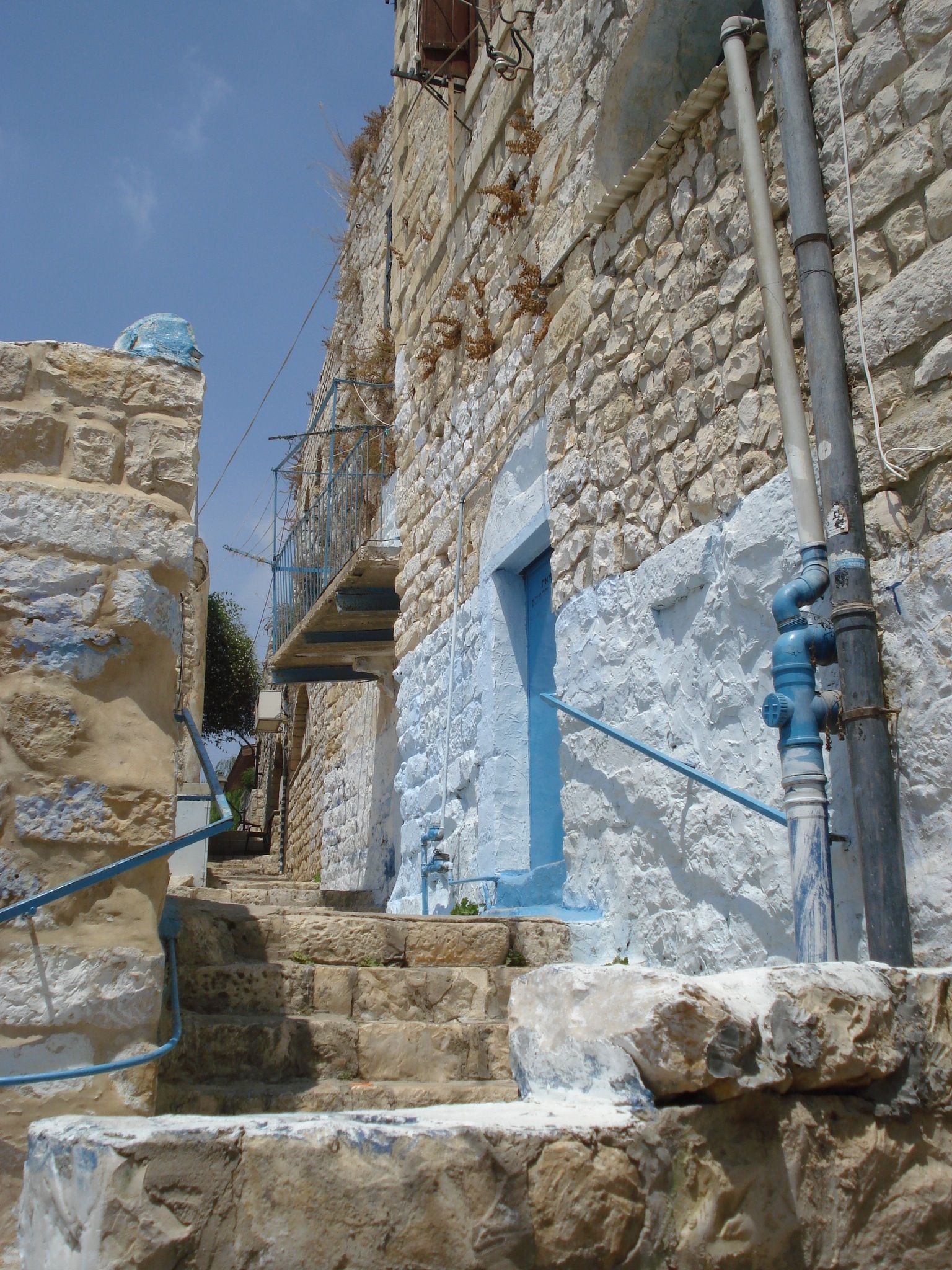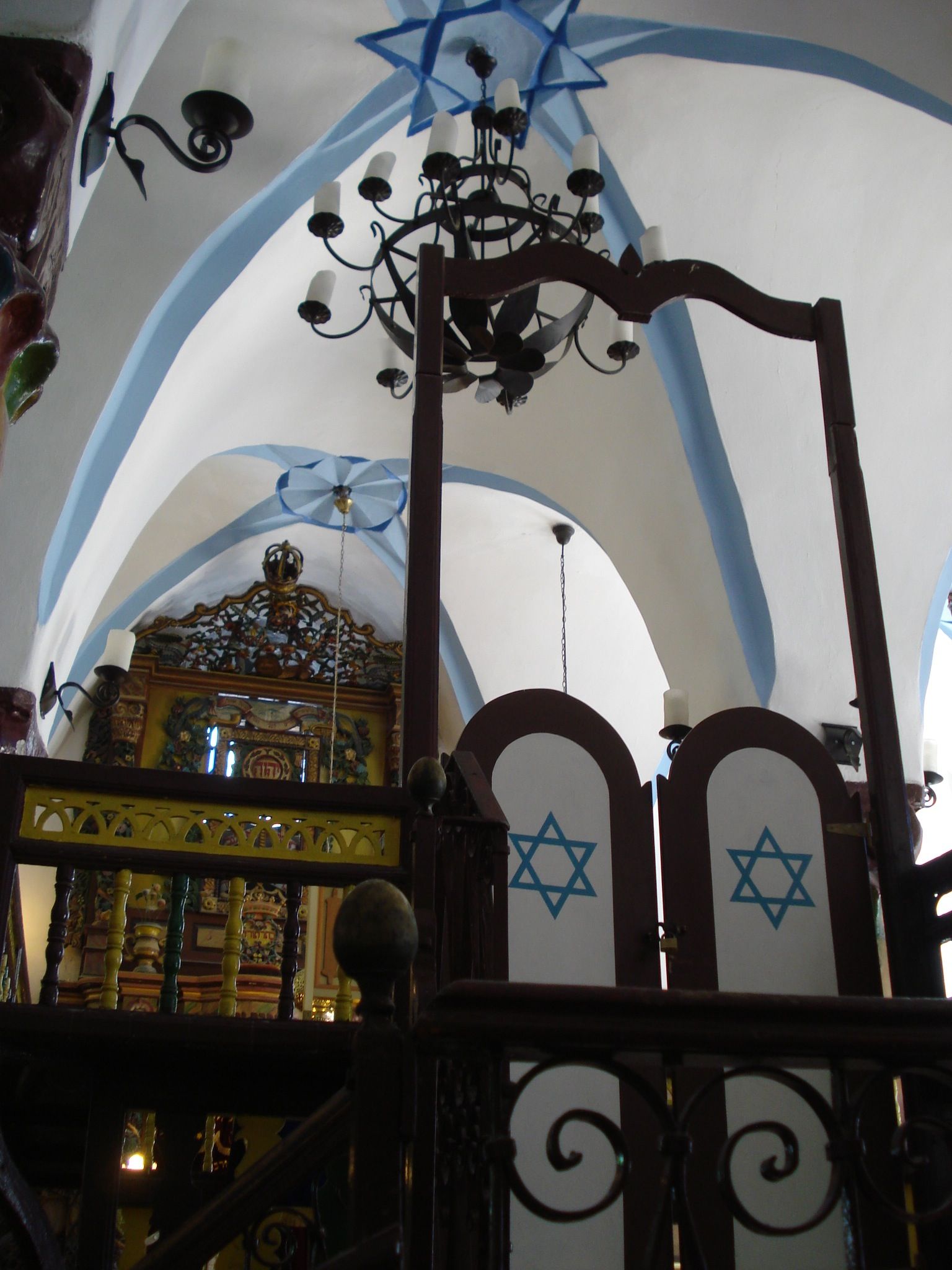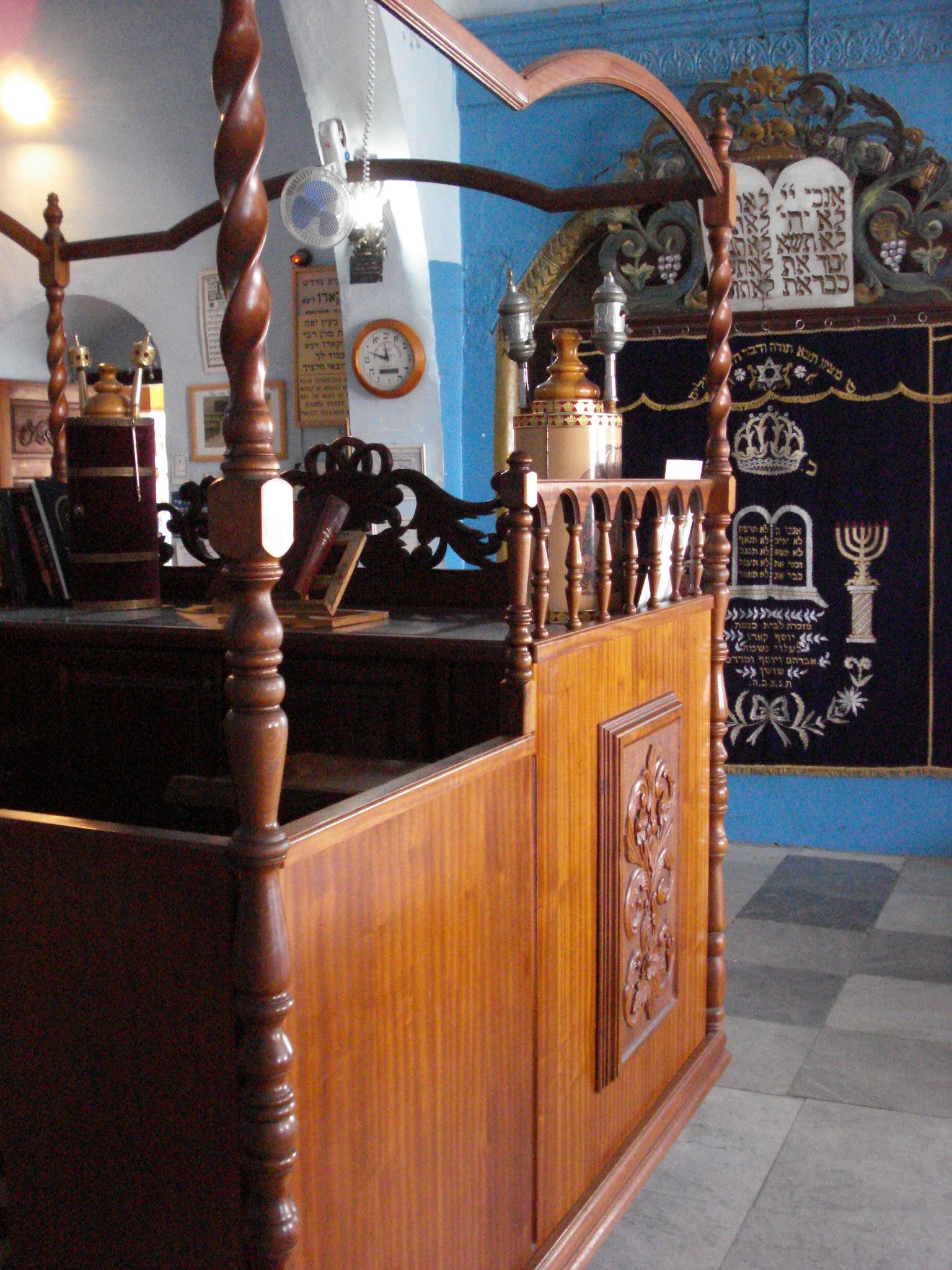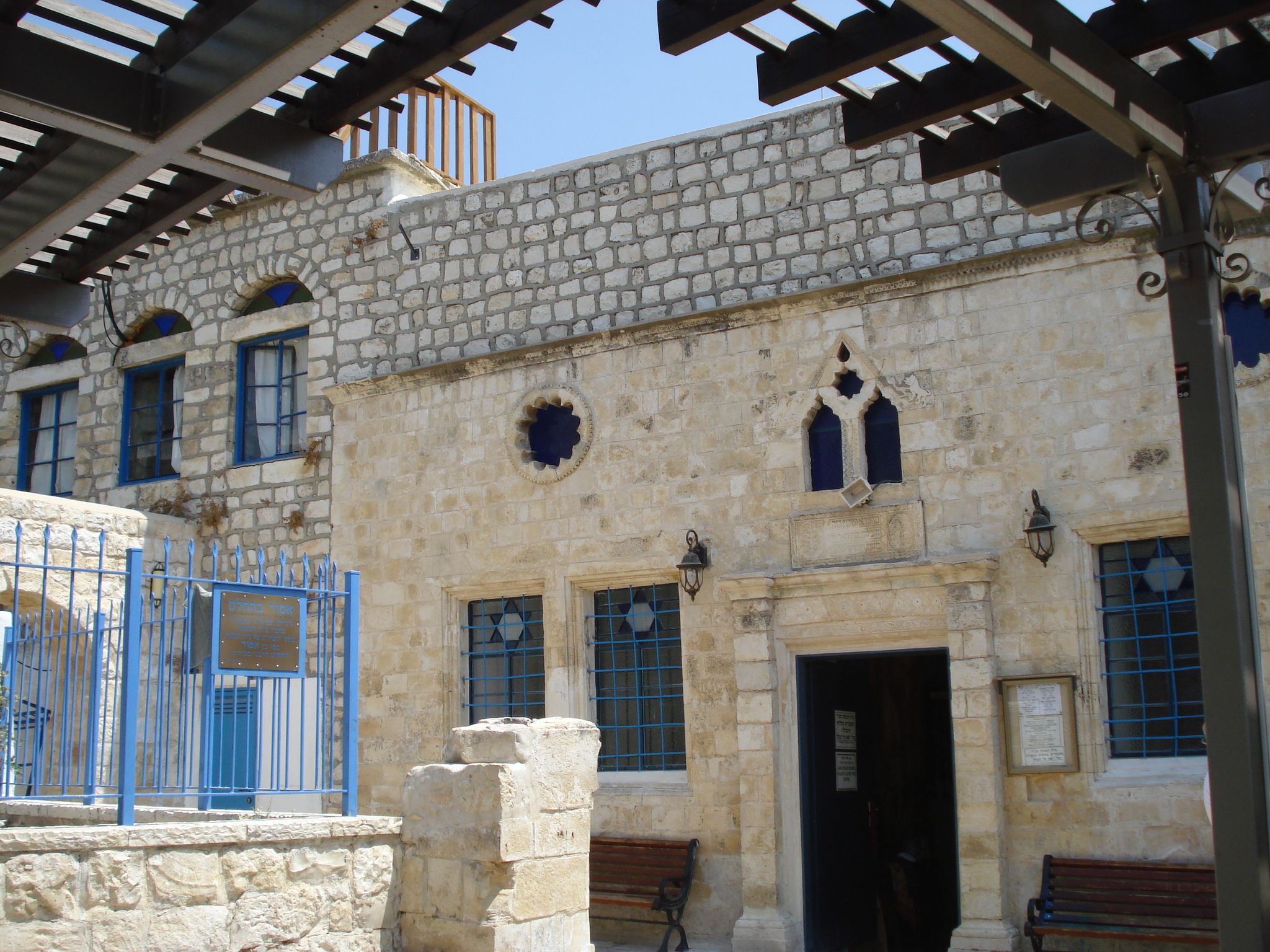Inerpicata sulle colline della Galilea, Safed è una delle quattro città sante del Talmud. Meno nota delle altre tre (Gerusalemme, Hebron e Tiberiade) possiede però un fascino unico dato anche dalla presenza di numerose importanti sinagoghe e del colore blu che caratterizza ogni angolo della città. Blu come il cielo, blu come il ricordo costante della presenza di Dio.
Cammini per Safed (o Tsfat come la chiamano gli abitanti) e hai subito l’impressione di trovarti in un luogo particolare, affascinante e silenzioso, dove ogni cosa sembra nasconderne un’altra e ogni porta, rigorosamente azzurra, sembra condurre a uno spazio segreto. Uomini in nero, con abiti chassidici di varia appartenenza, cernecchi e cappelli di foggia antica, percorrono scale ripide diretti a luoghi segreti di studio e meditazione. Questa infatti è la città della Cabala, delle sinagoghe dedicate ai grandi maestri, delle tombe dalla cupola azzurra, dello studio e della meditazione. Uno di quei luoghi in cui, la tua “non appartenenza” a un mondo di conoscenze segrete si trasforma in un velato senso di invidia, in una voglia di conoscenza che puoi sublimare soltanto acquistando qualche oggetto d’arte o contemplando qualche misteriosa calligrafia.

Tsfat infatti è anche una città di artisti, tanto che una parte dell’antico insediamento, quella che un tempo era la città araba, oggi è denominata Artist Colony ed è ricca di atelier e studi creativi. Una serie di terribili terremoti ha più volte annientato la più alta città di Israele ma la ricostruzione ha sempre rispettato una totale omogeneità stilistica nelle abitazioni che, nella loro semplicità, paiono quasi dei fogli su cui tracciare eleganti segni azzurri.

Una stretta strada che fa da asse al nucleo antico, affiancata da negozi e piccoli locali, porta a una piazzetta dove si trova la semplice sinagoga di Ari Ashkenazi, legata alla memoria del grande rabbino Itzhak Luria, uno degli ispiratori del movimento chassidico. Piccola e raccolta, ovviamente “azzurra”, è un luogo di pellegrinaggio dove si incontrano ebrei provenienti da ogni parte del mondo.

Poco lontana sorge la sinagoga di Itzhak Abohav, dedicata a un grande mistico spagnolo che, secondo una tradizione comune ad altri edifici sacri di altre religioni, venne portata qui direttamente dalla Spagna. Più grande e decorata di quella di Itzhak Luria custodisce preziosi manoscritti.

Terza sinagoga è quella di Joshep Caro, altro grande maestro spagnolo qui giunto nel 1555, autore, proprio in questo luogo, del Megid Meshraim, importante opera mistica.

La visita a però non può dirsi completa se non si rende omaggio alla tomba di un altro grande maestro, rabbi Shimon Bar Yochai, autore dello Zohar, forse il più famoso testo di mistica ebraica. Si trova a Meron, un villaggio a sette chilometri da Safed ed è un luogo strano, pieno di quel fervore tipico dei santuari, in cui la devozione al personaggio, di cui si trovano in vendita ritratti e immagini, raggiunge spesso aspetti di grande pathos e commozione. Accolto nel semplice spazio dedicato agli uomini (la tomba come tutti i sepolcri ebraici e islamici ha ingressi separati) non posso non sentirmi coinvolto dall’emozione che leggo sui volti dei presenti e nel bisogno di quel semplice contatto, fisico e spirituale al tempo stesso, che è alla base di ogni pellegrinaggio, in ogni luogo, per ogni fede.
OGNI ARTICOLO DIVENTA UN VIAGGIO! SE SEI INTERESSATO A ORGANIZZARE UN VIAGGIO SUI TEMI TRATTATI DA CITYPILGRIMBLOG LEGGI QUI

High on the Galilean hills, Tsfat is one of the four holy cities of the Talmud. Less known than the other three (Jerusalem, Hebron, and Tiberias) has a unique charm coming from the blue color you can find everywhere in the city. Blue as the sky, blue as the memory of the presence of God.
Walk-in Tsfat streets and immediately you feel yourself wandering in a fascinating and silent place, where everything seems to hide a secret and every door, strictly blue, seems to lead to a mystical space. Men in black, with Chassidic clothes, walk down narrow stairs leading to secret places of study and meditation. This is the city of the Kabbalah, of the old synagogues dedicated to the great masters; the city of the blue-domed tombs, the city of study and meditation, a place where your “not belonging” to a world of secret knowledge could transform itself in a kind of envy, a desire for knowledge that you can only sublimate by buying some art objects or contemplating some mysterious handwriting.

Tsfat is a city of artists as well and a part of the ancient settlement, once the Arab city, is now called Artist Colony and it’s full of ateliers and creative studios. A series of terrible earthquakes have repeatedly annihilated the highest city in Israel, but the reconstruction has always respected a total stylistic homogeneity in the houses’ shape, just simple sheets on which you can trace elegant blue signs. A narrow street, flanked by shops and bars, the axis of the old town, leads to a small square where rises the simple synagogue of Ari Ashkenazi, linked to the memory of the great rabbi Itzhak Luria, one of the inspirers of the Chassidic movement. Small and intimate, obviously “blue”, it is a place of pilgrimage where Jews from all over the world meet.

Not far away is the synagogue of Itzhak Abohav, dedicated to a great Spanish mystic that, according to a tradition common to other sacred buildings of other religions, was brought here directly from Spain. Larger and more decorated than the Itzhak Luria one holds precious manuscripts. The third synagogue is dedicated to Joshep Caro, another great Spanish master who came here in 1555 and wrote, just right here, Megid Meshraim, an important mystical work.

However, the visit cannot be said to be complete without paying homage to the tomb of another great master, Rabbi Shimon Bar Yochai, author of the Zohar, perhaps the most famous text of Jewish mysticism. You’ve to reach Meron, a small village seven kilometers from Tsfat. The tomb seems a very mystical place, full of devotion to the venerable master and his son Eleazar, which are on sale portraits and images. Welcomed in the simple space dedicated to men (the tomb has separate entrances), I feel involved in the emotions of believers and I try to share the deep spiritual shake coming for a simple contact with a stone, the same physical and spiritual emotion I feel in every pilgrimage, in every place, for every faith.




4 commenti